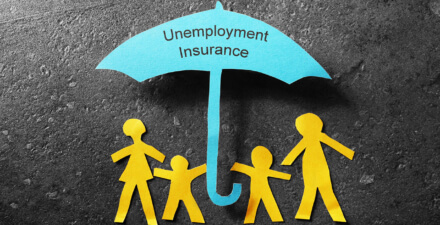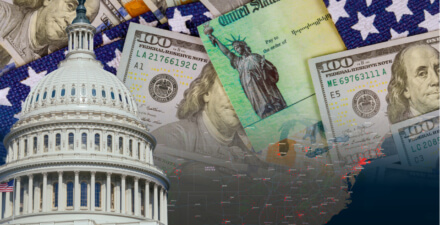The three ways fiscal policy can be used to fight COVID-19 and the coronavirus recession

Late in March, before the U.S. Congress passed the $2.2 trillion Coronavirus Aid, Relief, and Economic Security Act and President Donald Trump signed it into law, economists Emmanuel Saez and Gabriel Zucman at the University of California, Berkeley invited me to kick off an online convening of more than 100 economists and experts to discuss the coronavirus pandemic and the coronavirus recession that was already underway, and how to use fiscal policy to address these twin crises here and around the world. The questions I raised and the points I made remain germane as the CARES Act begins, slowly, to deliver economic relief to workers and businesses, stimulus to the economy, and support for the U.S. healthcare sector. I’ve also since written on this topic.
Here are my thoughts on how to use fiscal policy to address the pandemic.
The first task, above all others, is to slow the spread of COVID-19, the disease spread by the new coronavirus. In the short run, fiscal policy can only play a limited role, as the binding constraints are mostly on the technological side. The challenge is to give the right incentives to firms, as well as funding for federal agencies, to produce tests, explore drugs, and develop vaccines. All this spending is essential, existential, and expensive, but still small in macroeconomic and budgetary terms—less than 1 percent of Gross Domestic Product.
The second task is disaster relief—aiding the people and businesses affected by the economic shutdown. The economic losses are tremendous. A large proportion of households had no cash reserves even before this disaster. Already more than 16 million new unemployment claims have been filed, and many millions more Americans are out of work. On the business side, many small and medium-size enterprises, whose value represents 45 percent of American business, don’t have enough cash to survive more than a few months without assistance. The challenge here is to achieve the best trade-off between speed and targeting.
The CARES Act provides individuals with a combination of increased unemployment benefits for those out of work and cash payments to all Americans up to an income cap. For businesses, the U.S. government is providing funds for banks to make loans. So far, the programs have revealed how difficult all these tasks are. The loan program so far has been administratively and financially inadequate to the task. The crisis has also exposed the administrative weaknesses of the Unemployment Insurance system in many states. To increase the probability that those who need the funds get them, the overall legislative package, which also includes aid for state and local governments and for public health efforts, has erred on the generous side, reaching about 10 percent of GDP. It will be important to adjust and target it better over time.
The third task is support of aggregate demand. In a normal recession, support of aggregate demand would be the priority for fiscal policy. But this is not a normal recession. In the short run, so long as confinement and lockdown constraints are on, potential output will remain much lower. The decrease in potential output under full lockdown and closing of nonessential businesses probably ranges between 25 percent and 40 percent. As long as lockdown is in effect, demand must also be permitted to decline by around that amount. Sustaining demand above output—say, through tax cuts for firms or households—may lead to rationing and inflation rather than an increase in activity.
This concern about supply constraints may not be a major issue, as much of the spending being supported would likely go toward items such as making mortgage payments and buying food. And even if there is some rationing and some inflation, the distribution effects—namely, that poorer households have enough to eat—are such that the outcome is still desirable. Nevertheless, while potential output remains much lower, boosting aggregate demand beyond what is needed for disaster relief is probably unwise.
If and when the COVID-19 infection rate is under control, and restrictions are relaxed, and we have been able to avoid widespread bankruptcies, potential output is likely to return close to its old level. Will there be a need to boost aggregate demand then to help the economy recover more quickly? On the one hand, there will be pent-up demand from consumers who were prevented from buying cars and other durables during the lockdown. On the other hand, the rate at which restrictions are removed, and likely concerns about the possible reimposition of restrictions if the infection rate rises again, will likely lead to precautionary saving by consumers and low investment by firms. Government should be ready to act but not commit yet to a specific level of fiscal expansion before we see which way demand goes.
Developed economies such as the United States should not worry about the increase in debt resulting from these measures. Suppose that the combination of increased budget deficits and decreased output leads to an increase in debt-to-GDP ratio of 30 percent. Should this lead policymakers to limit expenditures now by providing more loans rather than grants, or by some other means? Short of a defeat in the fight against the coronavirus, debt will remain sustainable. And if we lose that battle, debt sustainability will be the least of our problems. Advanced-country governments should not hesitate to run deficits if, given constraints on monetary policy, deficits are required to maintain output at potential. And those constraints on monetary policy, due to very low interest rates, are likely to continue. Indeed, rates are likely to be even lower in the future than they were expected to be before the COVID-19 crisis.
To sum up, we need to do whatever it takes, spend whatever we need to spend, to combat this disease and support the individuals and businesses deeply affected by the needed economic shutdown. Increased hunger and greatly increased bankruptcies are not acceptable outcomes. And we need to be ready and committed to spend more if demand does not pick up and understand that the American economy can well withstand any resulting increase in debt.
—Olivier Jean Blanchard is a Senior Fellow at the Peterson Institute for International Economics and was the chief economist at the International Monetary Fund, from September 2008 to October 2015.






